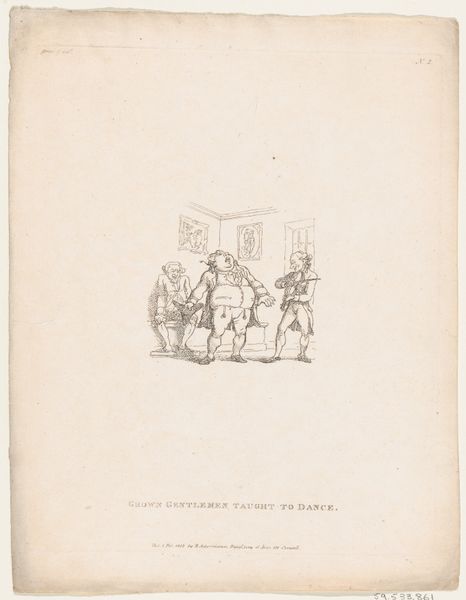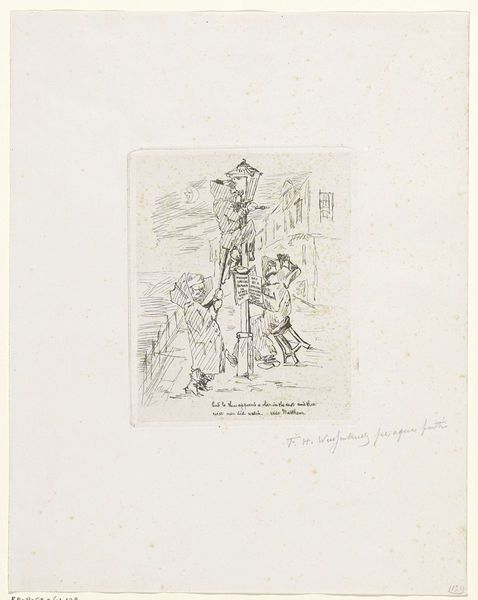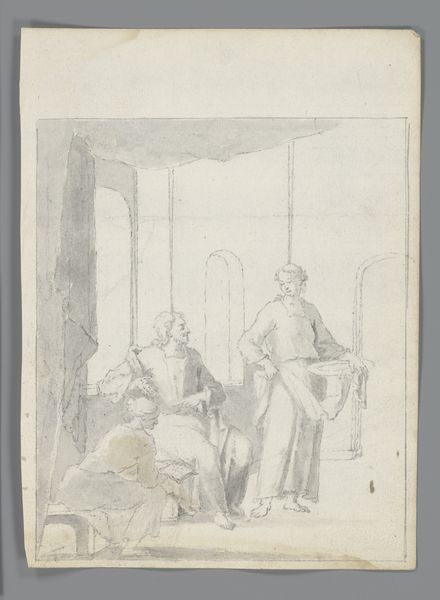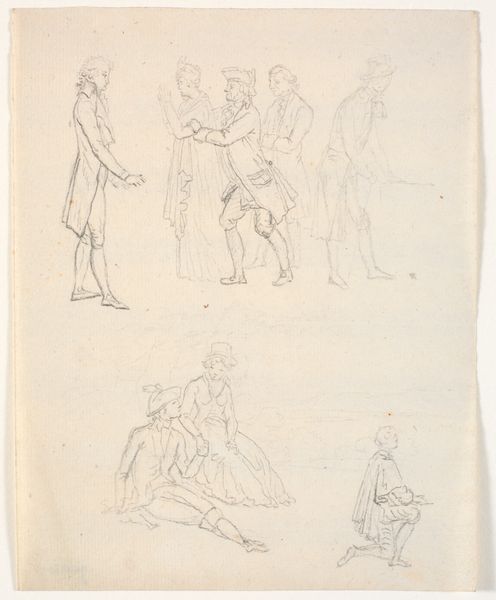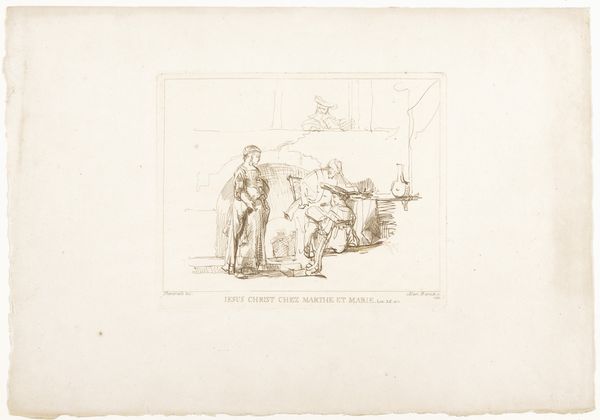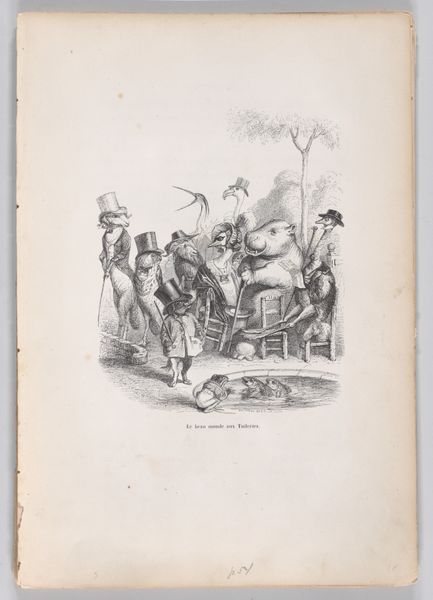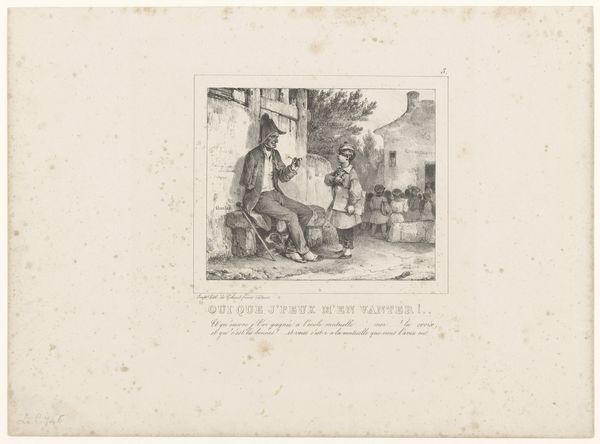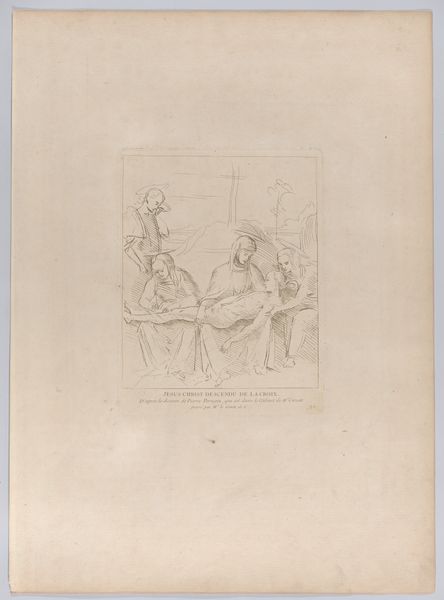
Raffenberg og hans hustru på bagsædet i en vogn. På tjenersæ-det en dreng med tørklæde op til øjnene 1846
0:00
0:00
drawing
#
portrait
#
drawing
#
romanticism
#
genre-painting
Dimensions: 253 mm (height) x 192 mm (width) (billedmaal)
Johan Thomas Lundbye sketched in pen and ink "Raffenberg and his wife in the back seat of a carriage" in 1816, capturing a scene laden with subtle yet telling symbols. Dominating the upper register is a pyramid structure, an ancient symbol of eternity and the afterlife, which here may allude to mortality. The veiled boy, his face obscured, evokes themes of concealment and hidden truths, a motif that echoes in funerary art across cultures, where veils signify mourning and mystery. This act of covering can be traced back to ancient Roman rituals, where the head was covered during sacrifices to shield the wearer from divine presence. Note the stoic posture of Raffenberg, cane in hand, beside his wife. This echoes the scepter of power seen in depictions of rulers throughout history. This rigid posture may signal his social standing, yet it also hints at a deeper, perhaps subconscious, assertion of authority in the face of life’s uncertainties. These symbols resurface through time, adapting, and remind us of the cyclical, enduring nature of human experience.
Comments
No comments
Be the first to comment and join the conversation on the ultimate creative platform.
